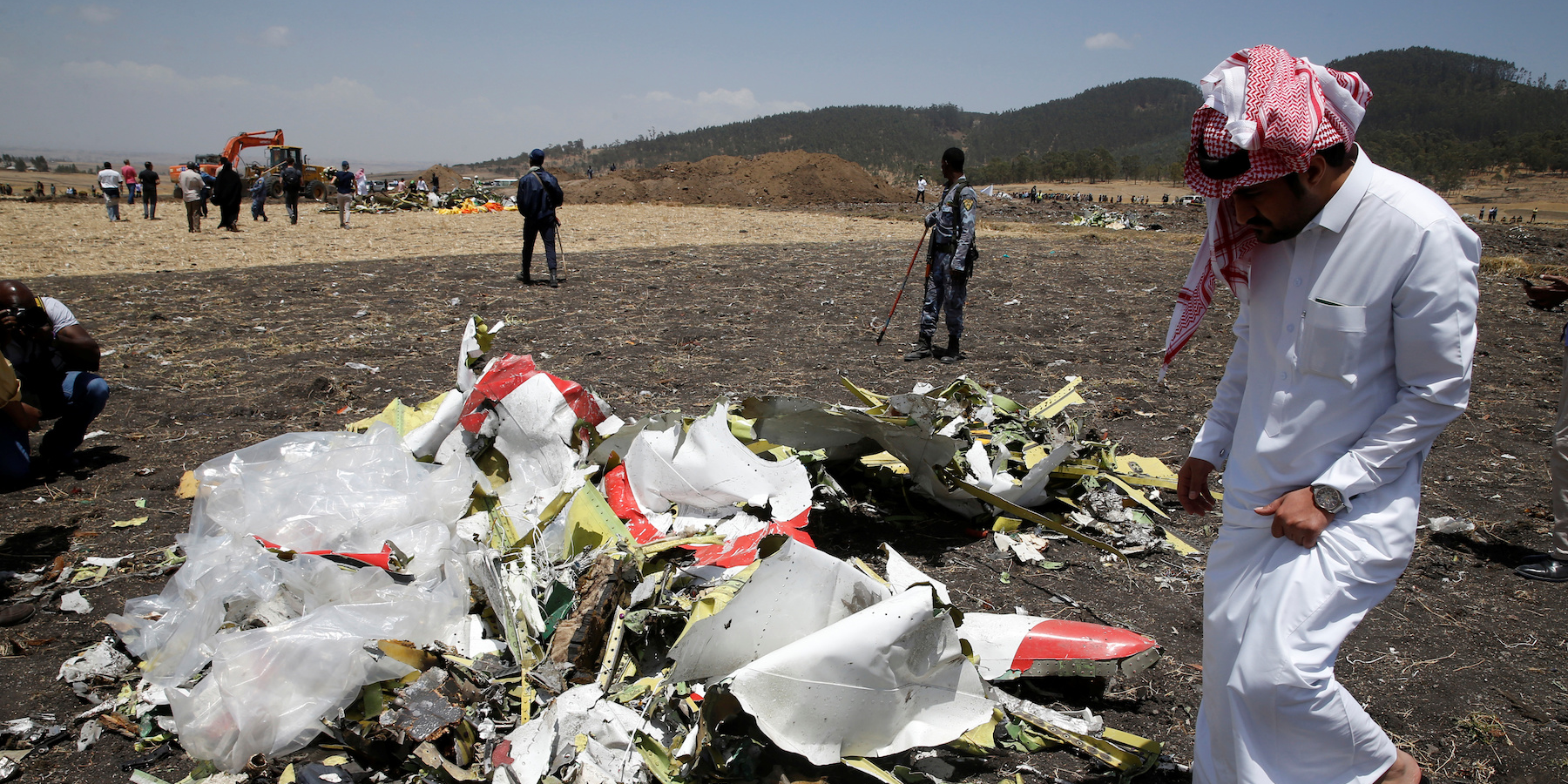- Lion Air Flight 610 and Ethiopian Airlines Flight 302 crashed within five months of each other despite being effectively brand new.
- Both flights lacked two optional safety features related to a suspected cause of the crashes, because Boeing charged extra for them, The New York Times reports.
- They were an indicator relaying sensor readings of how much the plane’s nose is tilted and a light that activates when the plane’s two nose-tilt sensors are at odds with each other, The Times said.
- Boeing will now make the “disagree light” standard on all 737 Max jets, The Times said. The company is also planning a new software update.
The Lion Air and Ethiopian Airlines jets that crashed over the past five months lacked two safety features related to the suspected cause of the crashes, because Boeing charged extra for them, The New York Times reported Thursday.
Lion Air Flight 610 crashed in the Java Sea in October, killing all 189 people on board. Ethiopian Airlines Flight 302 crashed on March 10, killing all 157 people on board.
Both jets – Boeing 737 Max 8 planes – were effectively brand new, and the crashes prompted a worldwide grounding of the plane.

While the causes of the two crashes are not yet known, investigators are examining whether the Maneuvering Characteristics Augmentation System - automated software designed to prevent the plane's nose from tipping upward - was incorrectly triggered, forcing both planes into a dive.
Dagmawit Moges, Ethiopia's transport minister, said the two disasters had "clear similarities."
Both optional safety features The Times said were absent from the two flights could have helped the pilots identify problems related to MCAS:
- One, an angle-of-attack indicator, shows readings from two angle-of-attack sensors, which determine how much the plane's nose is pointing up or down in relation to the air.
- The other, known as a disagree light, activates when the two sensors show conflicting readings.

The US Federal Aviation Administration does not require jets to install the two safety features, The Times reported. Business Insider has contacted the FAA for comment.
Bjorn Fehrm, an analyst at the aviation consultancy Leeham, told The Times that the safety upgrades were "critical" and "cost almost nothing for the airlines to install."
"Boeing charges for them because it can," Fehrm added. "But they're vital for safety."
Business Insider has contacted Boeing for comment.

According to The Times, Boeing charges extra for a range of upgrades, including backup fire extinguishers. But many airlines opt for the cheapest model they can get and tend to redact details of features they pay for or opt out of.
As of 2013, airlines tended to spend $800,000 to $2 million a plane on optional upgrades for planes of a similar size as the 737 Max 8, The Times reported, citing the consultancy Jackson Square Aviation.
A Boeing 737 Max 8 as of January cost about $121 million, according to Statista.

Boeing has said it will install an MCAS software update on all 737 Max planes.
According to The Times, the firm now also plans to make the disagree light standard on new 737 Max planes, while the angle-of-attack indicator will remain optional.
The US, Europe, Canada, and more than 50 other countries grounded their 737 Max jets after the Ethiopian Airlines crash.

